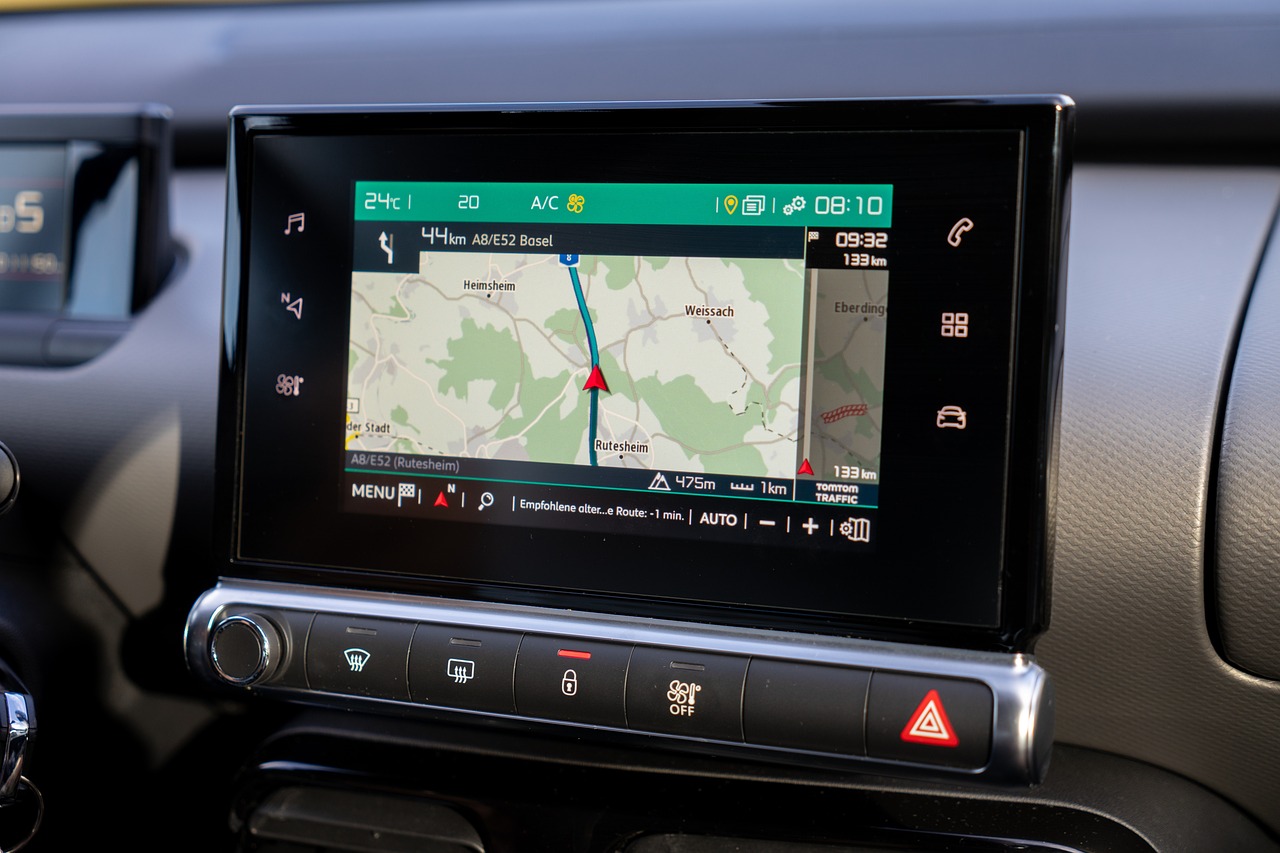When you’re behind the wheel of a big rig, your GPS isn’t just a convenience—it’s a lifeline. It can mean the difference between an on-time delivery and hours lost to detours, road restrictions, or unexpected hazards. Not all navigation systems are created equal, and for professional truck drivers, the stakes are higher. From routing around low bridges to avoiding traffic bottlenecks, the best truck driver GPS devices are purpose-built with unique features to meet the demands of the road.
In this guide, we break down the essential features to look for when choosing a GPS system tailored for truck driving, helping you make an informed investment in a tool that keeps you safe, efficient, and ahead of schedule.
- Truck-Specific Routing
The most critical feature in any truck driver GPS is its ability to provide truck-legal routing. Unlike passenger vehicles, trucks face strict restrictions on where they can travel, based on weight, height, width, and type of cargo. A high-quality truck GPS allows drivers to input:
- Vehicle dimensions (height, length, width)
- Gross vehicle weight
- Axle configuration
- Hazardous material classifications
With this data, the GPS avoids routes with low overpasses, weight-restricted roads, and non-truck-friendly areas. This is vital for staying compliant with the law and avoiding costly fines—or worse, getting stuck.
- Up-to-Date Map and Traffic Data
Outdated maps can lead to missed turns, detours, or even violations. A modern truck GPS should include:
- Lifetime map updates to ensure you’re always using the most current information.
- Real-time traffic updates to help avoid congested areas, construction zones, and accidents.
- Alternate route suggestions for when traffic patterns suddenly shift.
Some devices come with built-in Wi-Fi or Bluetooth to enable automatic updates without connecting to a computer.
- Customizable Points of Interest (POIs)
Truck drivers have different needs on the road. Instead of looking for coffee shops or local diners, drivers may need:
- Truck stops
- Weigh stations
- Rest areas with long parking
- Diesel fuel stations
- Truck-friendly restaurants and motels
A good truck driver GPS should come loaded with—or allow you to add—these Points of Interest. Bonus points if the system lets you sort by distance, rating, or availability.
- Voice-Guided Turn-by-Turn Directions
Taking your eyes off the road, especially in a large vehicle, is dangerous. Voice-guided directions allow you to:
- Stay focused on the road
- Receive timely alerts before turns or exits
- Navigate complex highway interchanges with confidence
Look for devices with natural speech recognition or text-to-speech technology, which pronounce full street names and important alerts clearly.
- Lane Guidance and Junction Views
Driving a truck requires foresight, especially when approaching highway interchanges or navigating large cities. Lane guidance helps drivers position themselves correctly ahead of time. It typically includes:
- Clear instructions on which lane to be in
- Realistic 3D junction views to visualize upcoming exits or forks
- Highlighted routes for quick decision-making
This feature is a game-changer when navigating unfamiliar or high-traffic areas.
- ELD and Fleet Integration (Optional)
If you’re part of a fleet or using an electronic logging device (ELD), having GPS compatibility with your system is a significant advantage. Some GPS devices are designed to integrate with fleet management platforms or offer:
- HOS (Hours of Service) tracking
- Maintenance alerts
- Driver performance analytics
- Dispatch communication tools
This added functionality turns your GPS into a full-fledged operations hub, making it easier to stay compliant and productive.
- Weather and Road Hazard Alerts
Weather can drastically impact a trucker’s route and timing. A GPS with real-time weather integration can help you:
- Avoid flooded or icy roads
- Plan for high-wind zones
- Reroute around severe storms
Some models even display road condition alerts, like steep grades, sharp curves, or accident-prone zones. These features help ensure safety and prevent unnecessary downtime.
- User-Friendly Interface
You don’t want to fumble with small icons or confusing menus while driving. A truck GPS should have:
- A large, glare-resistant touchscreen (typically 5–7 inches or larger)
- An intuitive menu layout
- Quick response times
- Customizable settings for font size, brightness, and color themes
Ease of use enhances safety and ensures you get the information you need without distractions.
- Multi-Stop Trip Planning
Truckers rarely go from Point A to Point B in one straight line. You may need to:
- Pick up multiple loads
- Make several deliveries
- Take required rest stops
Look for GPS devices that offer multi-stop routing. These allow you to plan complex itineraries with up to 10 or more destinations, calculate optimized routes, and update your ETA for each stop.
- Offline Navigation Capabilities
While cell phones rely on data or Wi-Fi, a standalone truck driver GPS usually includes offline navigation. This is essential when traveling through remote areas where signal strength may be poor or nonexistent. Offline maps:
- Ensure uninterrupted navigation
- Allow route recalculations even in dead zones
- Prevent delays due to a lack of coverage
Make sure your device supports complete offline functionality for peace of mind anywhere on the map.
- Durability and Mounting Options
GPS units used in commercial trucks face more wear and tear than those in personal vehicles. A rugged, professional-grade GPS should be:
- Shock-resistant and vibration-proof
- Heat-resistant for hot dashboards
- Equipped with a secure, adjustable mount
Some units also offer magnetic or suction-based mounts with long power cords for easier placement and visibility within the cab.
- Bluetooth and Smartphone Compatibility
Connectivity with your smartphone can enhance your GPS experience by enabling:
- Hands-free calling and text notifications
- App-based route planning and syncing
- Streaming voice assistant commands
With a Bluetooth-enabled GPS, you can minimize distractions while still staying in touch with dispatchers, clients, and loved ones.
- Fuel Tracking and Cost Estimation
Some truck-specific GPS units go the extra mile by helping you monitor:
- Fuel usage per trip
- Route-based fuel cost estimations
- Efficiency reports for various routes
This can be invaluable for independent operators or fleet managers looking to cut down on expenses.
Invest in the Right GPS, Drive Smarter
A high-quality truck driver GPS is more than a tool—it’s your co-pilot, route planner, safety assistant, and time manager all in one. With so many options on the market, focusing on the features that matter most to your driving style and work requirements ensures you’re getting a system that pays dividends every mile.
Whether you’re an independent owner-operator or managing a fleet of long-haul drivers, investing in a GPS with the features listed above will keep you on track, reduce stress, and help you navigate even the most complex routes with confidence.
Safe travels, and may every mile be a smooth one.



































